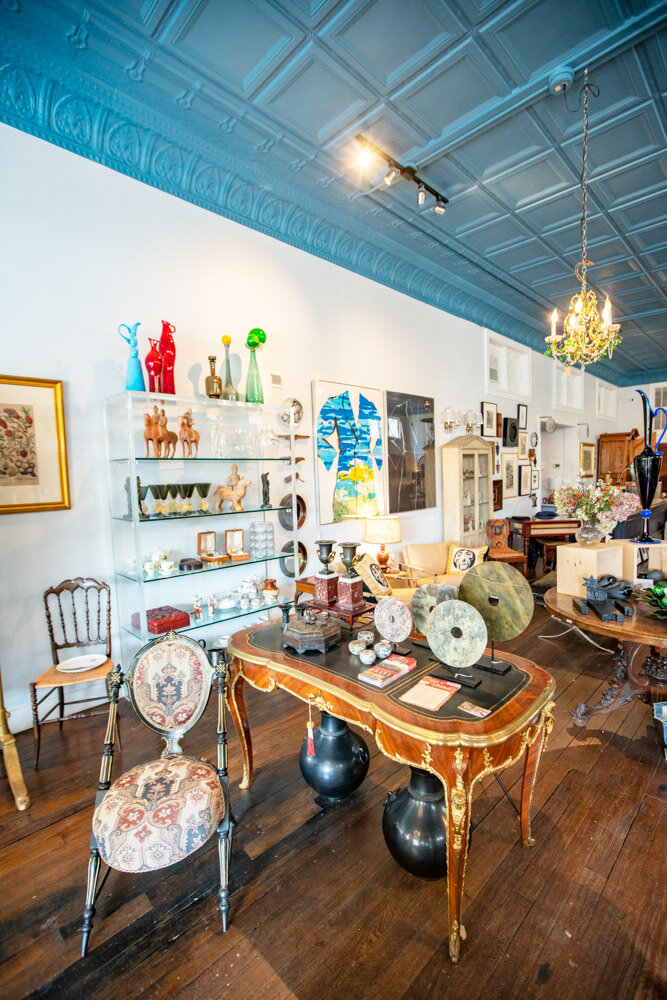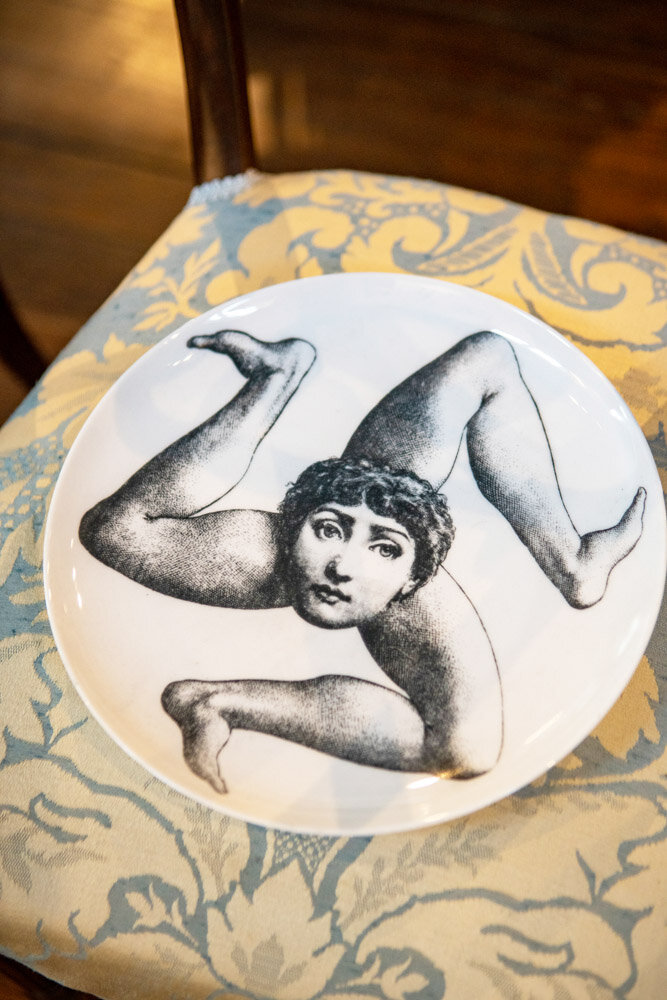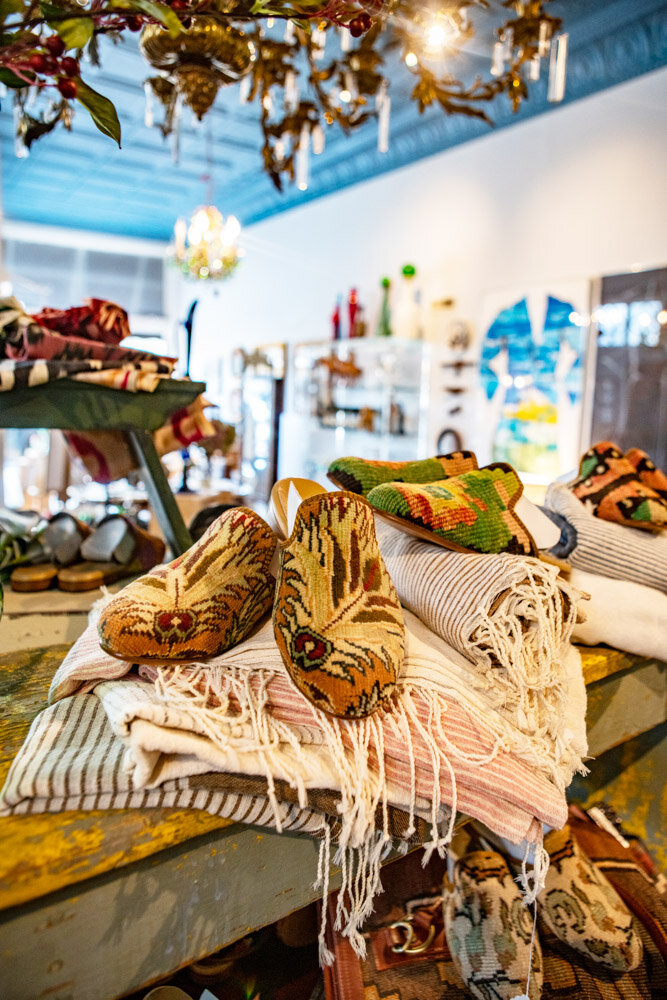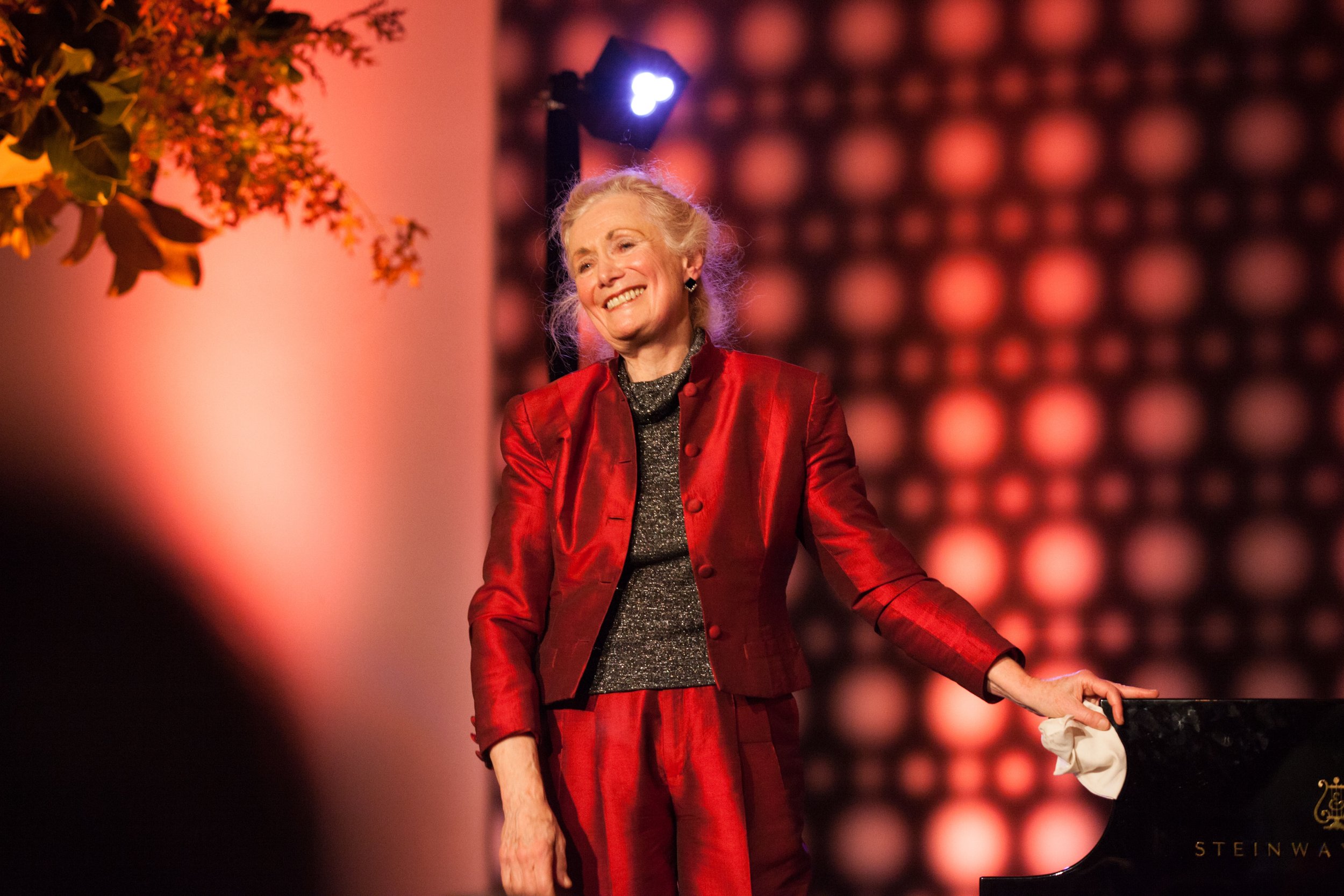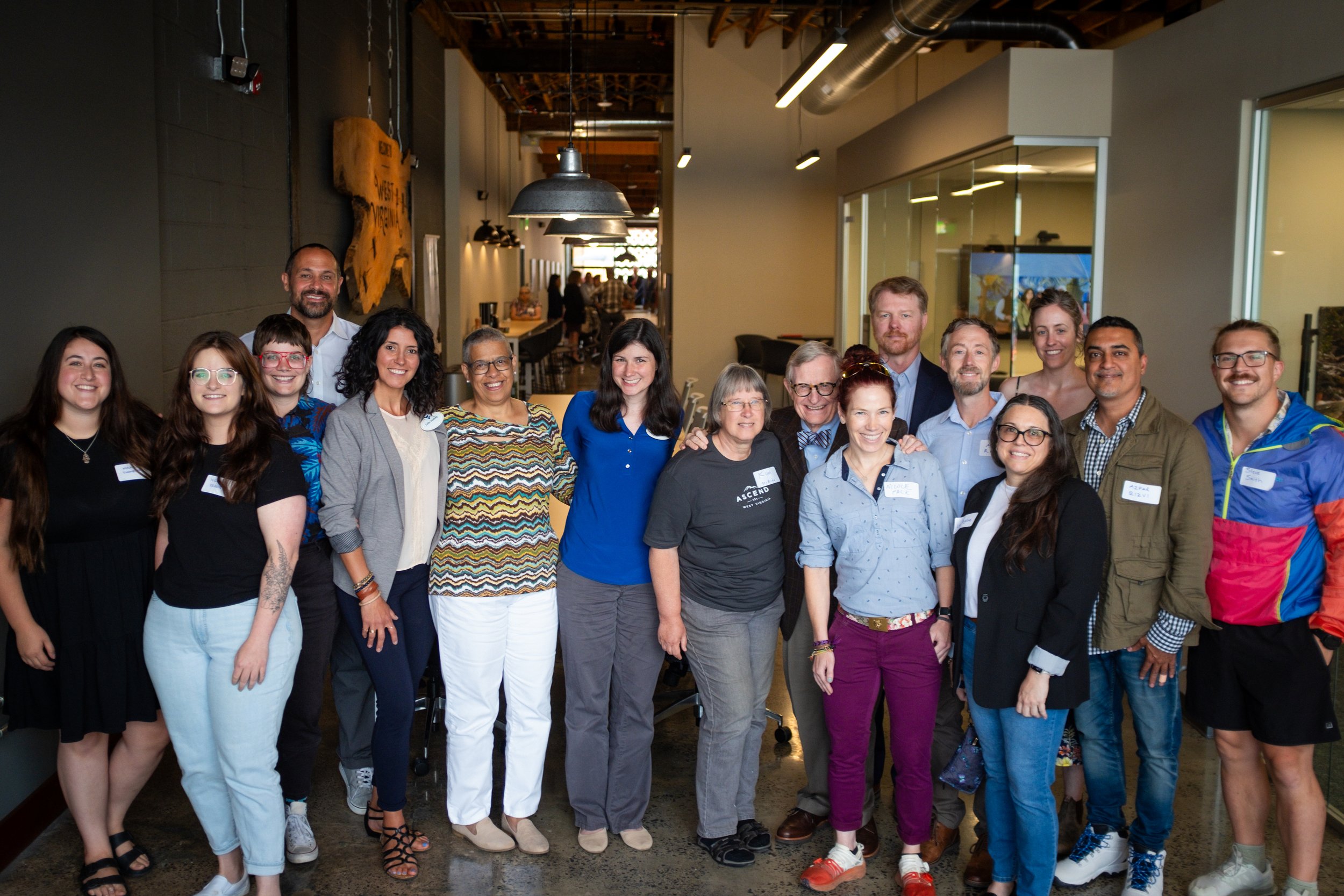Under the Sign of The Golden Rabbit

By Leah Tuckwiller
It’s no wonder the Greenbrier Valley attracts people who are seeking to create spaces where art is welcome. Art has been a leading component of our community for decades, attracting people from all over the world. Second-generation art and antiquities dealer Adrienne French is really no exception, having come to the area by way of education at Ohio Wesleyan and The Ringling College of Art and Design, and a decade of involvement in her father’s career of more than forty years.
Adrienne French, Under the Sign of the Golden Rabbit (the full name of her shop on Washington Street) brings the passionate connoisseur’s personal motto to Lewisburg—she invites people who love these things to, as she says, “Create Your Day, Color Your World, Curate Your Life.”
You might think it would be difficult to open a new shop in the middle of a global pandemic—and you certainly wouldn’t be wrong. Adrienne has nevertheless made the very best of the last six complicated months, after moving into the space many Lewisburg natives remember as The Old Hardware Gallery, and has gotten a warm Greenbrier Valley welcome from fellow art and antiquity lovers who respond to what drives her and what she has to offer. She’s opened her doors to the public whenever she can, and opens them one at a time for private appointments whenever she can’t.
Adrienne French, proprietor of The Golden Rabbit
“I was exhibiting at LA Art when the virus made it to the U.S., and I watched half of our international colleagues get up and leave,” Adrienne shared. “And that was kind of the moment that I was like ‘oh, okay, there’s not really going to be an easy road back from this. So a month later, probably, I came down and visited a friend who lives at The Greenbrier and I stumbled into Lewisburg and just fell in love with the small-town charm. My grandparents lived in a small town while I was growing up and, you know, it just had that vibe.”
And more than that, Adrienne knew when the virus reached the United States, she couldn’t just keep doing what she was doing.
“When I started losing colleagues, it was like ‘okay, crap, what difference am I actually making?’ I can sell stuff to museums all day long, that is what it is, but I wanted to bring more of a lifestyle approach to the fine arts world,” she said.
The enthusiasm she has for her work is catching, even for relative newcomers to the world of fine art and antiquities. For her, it’s important to be “able to educate people about what they have, what we have collectively, and how we can make antique and antiquity functionally relevant in a contemporary society. I’m really passionate about ethically collecting—the ethical consumption and perpetuation of connoisseurship.”
While we talk, a pair of women come to the door of the shop. They have clearly been here before, and know what they’re looking for. Adrienne knows them too, and even though the exact pieces they seek aren’t on display this time, they are invited in anyway.
It’s an opportunity they don’t turn down, perfectly happy to peruse the other items Adrienne has on display. The shop has that quality to it, beckoning like a grown-up version of Grandma’s attic with its treasures from other places, voices, and lives. Here, of course, things are impeccably cared for, shown carefully to the light. The old sheets covering rickety furniture and the persistent dust are nowhere to be found. Still, the space has the same inviting aura that makes a person want to come inside and see what awaits.
Adrienne’s knowledge is both deep and wide; she tells me and the two women perusing the shop about pieces of interest in great and loving detail. The world of art and antiquity is even more vast, though, and Adrienne has also been learning (and loving it) since she’s been in the Greenbrier Valley.
“I’ve had very positive response, and a lot of people in the area are interested in bringing things in and telling me the story behind them,” she says. “Like this,” pointing to a simple, beautiful cabinet that sits against the wall, “ is a local piece that we acquired. We had no idea of the construction history, like how old it could be - we thought maybe the 1800s, somewhere in there. Somebody came in and literally schooled me on it! Like okay, it is 18th century, this is how you know, one of the legs has been sawed down because you can see termite damage. They went through all of it and I was like, ‘Hey, thank you,’ you know? I only know so much,” she says, without embarrassment.
“I’ve been in this industry for over a decade, but I learn something new every day, that’s why I love doing this so much. It seems like people in general, in the area and beyond, love this.”
Adrienne finds most of her pieces on the secondary market, that is, collecting from sources besides artists themselves. But, she does work with a few living contemporary artists. As part of her mission for ethical connoisseurship in her trade, she passes on what value she finds to buyers; in some instances, that translates to instantly recognizable names like Louise Nevelson, Man Ray, and Piero Fornasetti, and in others, it’s shown in the prices available to buyers, as Adrienne offers pieces as affordably as she finds them. And in the case of every piece available Under the Sign of the Golden Rabbit, this means unparalleled quality found throughout the shop.
Nevelson’s monochromatic sculptures and a series of Fornasetti plates all featuring his daughter sit alongside local cabinetry, estate jewelry, and a display of shoes stacked right in the center of the shop, among other framed pieces, sculptures, and other finds. The shop is an enchanting collection of history, fine art, beauty, and voice—stories told from every corner.
“This is Ai Weiwei,” Adrienne elaborates on one such piece, displayed in the front window when I visit the shop. “He’s Chinese, and literally became a prisoner of the Chinese government. He was put under house arrest because he was taking ancient Chinese pots and putting the Coca-Cola symbol on them. And then he would take them and drop them and shatter them, and it would become performance art. And it was his statement to contemporary art and society and how they were looking past their ancestors and how everything is replaceable now in society. And he approached Coca-Cola under the guise of mass production and forced consumption. So he started there, and they put him under house arrest, literally did not let him leave. He nearly died at one point because he became so grievously ill and they denied him treatment. He escaped that, and is living in London now.”
The art of that performance, of course, didn’t quite make it directly to Lewisburg, West Virginia, but Adrienne goes on to say that Marcel Duchamp, widely recognized as father of the Dadaist movement, had done “a wanted poster, and this” - the framed piece in her shop - “is Ai Weiwei’s personal take on that.”
The best way to find out more is to, of course, give Adrienne a call about her appointment availability. As we head into the bleak midwinter, an enthusiastic talk about art and antiquity may be just the thing to chase away the winter blues.
“I just like to have conversations with people every day - that’s how I feel we’ll be able to keep this industry alive,” Adrienne says. “You know, we can only spend so much time behind a screen. When we surround ourselves with quality things, it elevates our mood.”
For contact details and a chance to see for yourself, visit www.thesignofthegoldenrabbit.com.

